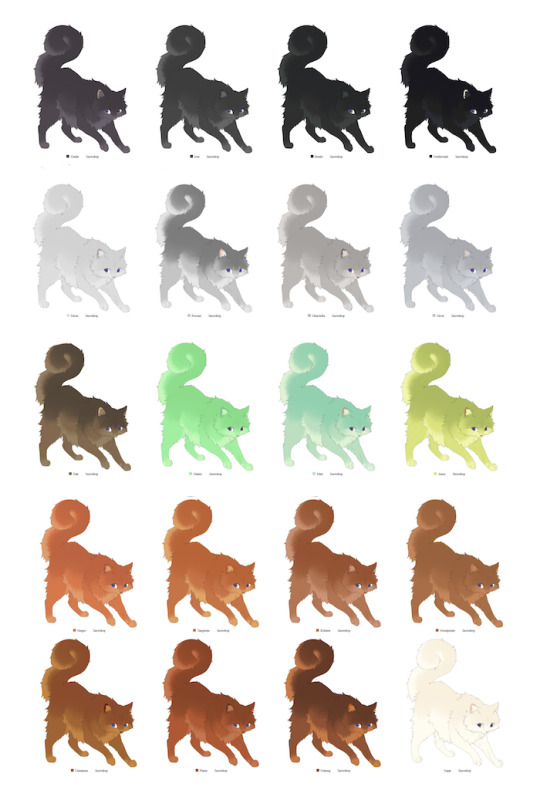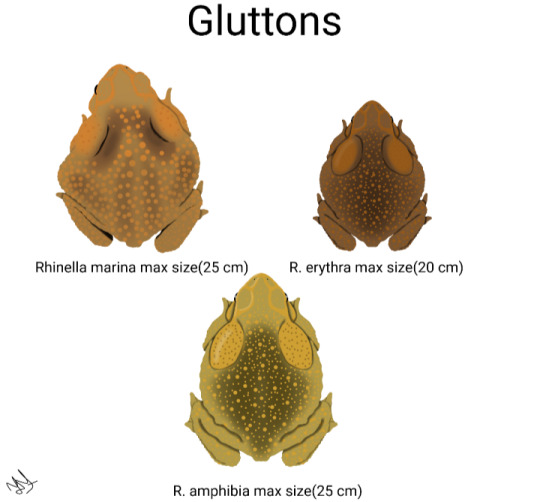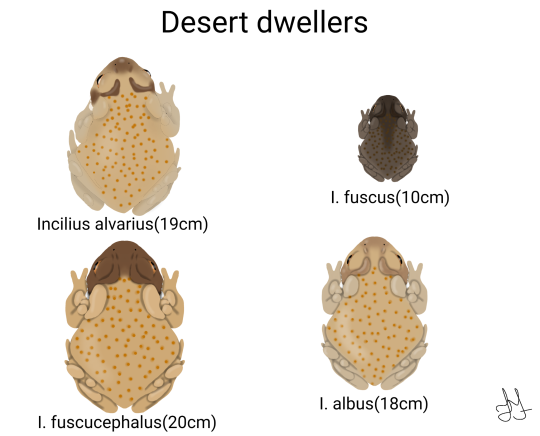#new variety of sugarcane
Explore tagged Tumblr posts
Text
गन्ने की खेती में क्रांति: नई किस्म को.लख. 16202 से होगा बंपर उत्पादन
लखनऊ: गन्ने की खेती करने वाले किसानों के लिए बड़ी खुशखबरी है। अगर आप गन्ने की बुवाई की योजना बना रहे हैं, तो भारतीय गन्ना अनुसंधान संस्थान, लखनऊ के वैज्ञानिकों द्वारा विकसित नई किस्म को.लख. 16202 को जरूर आजमाएं। यह किस्म गन्ने की खेती में न केवल बंपर उत्पादन देगी, बल्कि कम लागत और रोग प्रतिरोधक क्षमता के कारण किसानों को बेहतर मुनाफा दिलाएगी। को.लख. 16202: नई किस्म की खासियत गन्ने की इस नई किस्म��
#High Yield Sugarcane Varieties#improved variety of sugarcane#Indian Sugarcane Research Institute Lucknow#Kheti Kisani Hindi News#Kheti Kisani News in Hindi#New Sugarcane Variety Co.Lkh 16202#new variety of sugarcane#sugar#sugar meal#Sugarcane#sugarcane crop#sugarcane cultivation#Sugarcane Farming in India#Sugarcane Farming Tips#sugarcane production
0 notes
Text
ATEEZ SMALL PERFUME REVIEW: KILIAN — BLACK PHANTOM



disclaimer: this is not meant to be a serious perfume review, this is something fun for me to do as I love perfume. each and every one of us have different tastes and preferences when it comes to fragrances. what works for me might not work for you, vice versa. I’ll try my best to describe the scents but I will always suggest for you to go and smell them yourself before purchase. if you want to try these perfumes, please test or get a sample before committing to the bottle. picture credits to all owners.
ateez member: mingi
fragrance family: gourmand woods
notes:
top — rum
heart — coffee, cyanide
base — vetiver, sugarcane, sandalwood
my scent experience:
the fragrance starts off smelling like chocolate. there is a sweet element to it, from the rum but it’s overpowered by the overwhelming scent of chocolate and if anyone is familiar with my reviews, we know that chocolate isn’t my favorite scent. as it settles, it starts smelling like coffee and almonds which fun fact, is what cyanide smells like. well, some cyanides are odorless, but some are known to have a bitter almond scent. I was thinking to myself why this perfume had an almondy element to it but then I remembered this fact. also, I’m pretty sure it’s cyanide accord, meaning there’s no actual cyanide in the perfume but a mixture of scents created to mimic that particular scent. the dry down is warm and woody from the vetiver and sandalwood which is perfect for the colder season. think of a mocha that’s heavy on the chocolate with a bit of almond.
the projection is quite strong as anything that smells like chocolate tends to be overpowering when I wear it so I was a walking chocolate bar for a moment. the longevity is pretty good, it lasted around 6 hours on my skin. well for a kilian perfume I expected it to stick around for a while. that being said, can’t say I enjoyed it at first but towards the end, I didn’t mind it. this is a scent you definitely need to test out before purchasing it as it can be nauseating even for intense perfume lovers like me.
additional notes from me:
I was honestly surprised that Mingi uses this perfume as he tends to go for light and citrusy scents. this being in his collection means that he likes some sort of variety in his scents and switches it up from time to time. I’m definitely someone who encourages people to have a variety of olfactive families in their collection because sometimes you want to smell different. sometimes having only one scent family can be boring or might not be suitable for a particular occasion or season so having different types of scents is ideal if you want a small, curated collection. but of course, you can own multiple scents within the same olfactive family.
who would I recommend this to?
anyone who likes the scent of chocolate and coffee.
those who want a dark gourmand and are willing to splurge on a bottle.
anyone who wants to try Kilian fragrances.
if you’ve made it to the end, thank you for reading this review!! apologies for getting a little sidetracked with the whole cyanide talk but it is an interesting note to add into a fragrance. this is the last review of the year so I hope you have a wonderful new year and hopefully 2025 will be a better year for everyone!!
review written by librarisxng 2024
#ateez#ateez small perfume review#song mingi#mingi#park seonghwa#seonghwa#kim hongjoong#hongjoong#jeong yunho#yunho#kang yeosang#yeosang#choi san#san#jung wooyoung#wooyoung#choi jongho#jongho#perfume#fragrances#perfume reviews#if this flops it shall be the last flop of 2024#ateez x reader#ateez perfume
26 notes
·
View notes
Text
Excerpt from this story from Inside Climate News:
Your morning caffeine fix could soon become a luxury in the face of climate change. Last week, coffee prices surged to a 47-year high as global growers struggle to recover from extreme weather.
Over the past year, extended droughts have gripped Brazil and Vietnam—the world’s two largest producers of coffee. Scientists say the parched conditions were fueled by the El Niño weather pattern and global warming, which have triggered widespread coffee crop losses that could also affect next year’s supply.
Research shows that these conditions are a harbinger of our coffee future. By 2050, rising temperatures are projected to shrink suitable coffee-growing regions by half, which could eliminate a crucial revenue source for farmers in developing countries.
For the average consumer, coffee prices are expected to surge even higher with climate change (a shuddering thought as I sip on an already overpriced cappuccino). Now, coffee companies are testing a variety of strategies to adapt to climate shocks, from diversifying their sources to shifting away from the crop altogether.
In September, Brazil’s National Center for Monitoring and Early Warning of Natural Disasters said the country was undergoing the “most intense and widespread drought in history,” with nearly 60 percent of the region under stress. El Niño and climate change jacked up heat in South America, which exacerbated dryness in the region. But the drought can also be partially attributed to the rampant deforestation that has occurred in Brazil over the past few decades, which has altered rainfall patterns and the amount of moisture the land can absorb, The Washington Post reports.
As I wrote in November, droughts go hand in hand with wildfires. Over the past year, Brazil has seen some of its worst wildfires in decades, largely caused by a farming technique known as “slash-and-burn,” which is when farmers cut and scorch trees to clear land for more crops. Ironically, the fires started by this practice, as well as dry soil from the droughts, have devastated sugarcane, fruit and especially coffee crop yields across the country. Coffee growers in Vietnam have also been hit hard by droughts, and some are recovering from Typhoon Yagi, which hit the country in September.
Coffee arabica—the species most commonly used in consumer roasts—is particularly vulnerable to climate shocks. The plants thrive in the shady, moist environments found in tropical countries, typically growing best between 64 and 70 degrees Fahrenheit. But a 2022 study found that climate change will fuel higher temperatures that push key coffee-growing regions such as parts of Eastern Brazil and Southeast Asia out of coffee’s climatic sweet spot. The researchers identified a few areas in East Africa, Asia and South America that could benefit from changing conditions, but stressed that many of them do not yet have the infrastructure or space to support widespread coffee growth without adding to deforestation.
The price of arabica beans has spiked almost 70 percent on the New York Stock Exchange this year, with contracts for future yields costing $3.35 a pound at one point last week.
The industry is taking major hits, which will likely trickle down to consumers soon, experts say. In November, coffee maker Nestle SA announced that it will raise prices and produce smaller bags to weather the storm—or in this case, drought. Other business leaders are also reckoning with how to meet ever-growing demand for the beverage despite shrinking supplies.
4 notes
·
View notes
Text

Happy July! We’ve been chugging along and working our tails off. Here’s some progress!
New Assets - Fauna
First off, backer sponsored creatures!
Tundrake

Sponsored and concepted by Syber, designed and illustrated by Hydde
Lunasagi

Sponsored and concepted by Kuro, designed and illustrated by Remmie
Raptaroo

Sponsored and concepted by Skeevertut, designed and illustrated by Hydde
And a new regular guy...
Frillasnap

Designed and illustrated by Hydde
New Assets - Icons
It isn’t a productive month without an icon batch. Let’s see ‘em!

Ginger, Deer Mouse, Vanilla Bean, Grub, Ladybug, Mealworm, Sesame Pod, Soybean, Sugarcane, Bee, and Sweet Root all illustrated by Remmie
New Assets - Site Header
Over the past several months, we have been tooling and going with a site layout which accommodates a differently shaped header.


Designed and illustrated by Runeowl
Take a look at the beautiful night and day more header art for the “default” site theme!
This layout is proving much cleaner with a more intuitive and dynamic user experience. We currently have several staging deployments to get a feel for it and workshop the experience.
However, it is under wraps for the time being until we have the text, tab, color, and box sizing decisions fully locked in!
Thank you for the patience with our layout iterations! I’m really relieved by the direction things have gone, and feel Pawborough will be much fresher out the gate.
New Pattern - Butterfly

Designed and illustrated by Fulemy
We are playing with the face design further to make sure it best accommodates a variety of colors, but this pattern itself has turned out just stunning!

And we've been steadily working on producing and updating white coverage, going to great lengths to keep an aesthetic consistency between coverage shapes and cat patterns. Here are a few white shape tests on Butterfly!




Shapes designed by Hydde, illustrated by Remmie
New Pattern - Solid
We’ve decided to forego a universal “basic” pattern, and instead introduce a handful of very simple patterns which any G1 cat can generate with. Among them is Solid–one of the few patterns which does not show the undercoat!

This pattern will have varying levels of values per color! Some may have a dark back, while others may look like a totally solid cat! Here are a few auto-generated previews from our generation tool to get a feel for the variety:

We will be adjusting colors to make sure they are near fully solid, while others may look more dynamic.
The decision to not include an undercoat may feel like we’re breaking our own rules here, but there’s been a great deal of workshopping for our initially lackluster system. In order to make all patterns and colors look consistently good with one another while maintaining a varied user experience, we took a new approach. This includes a slightly new set of rules and philosophy for our patterns to follow!
Patterns like Solid will be few and far between, but they’ll exist. Expect us to push the boundaries for patterns and genes in the future, including experimenting with line breaking accents... some really fun stuff in the works!
Speaking of changing up the philosophy, let’s talk about colors…
Mechanic Update - Teaser...
Due to time constraints with creating the supplemental preview images, and not wanting to present a concept without the appropriate visuals to back it up, nor delay the update another few days, I have decided to push an announcement meant for this update to next week. I wear a lot of hats on this team and am always working on something, so sometimes I fall behind on creating update images of our progress for you all, and for that I apologize!
However, you may be delighted to hear that we have progressively refactored the color and breeding system and have a brand spanking new system which has proved incredibly exciting! The whole team is enthused by this development, and I will return in just a few days to share it!
Backend / Functionality Progress
Development is steady. So far we've completed the following:
User Accounts, log in, sign up, and validation/confirmation.
A users online count which tracks user activity.
Logic for cat generation, all we need is to plug in the assets!
Backend for breeding. We can see generative results in code.
Backend for the Camp and Den functionality, both this and breeding are next for front-end building.
Current in-progress for front-end development is User Onboarding, where a user creates their two founding cats, designing their appearance, attributes, and statistics.
Frontend UX/UI designs for the above plus cat profiles, a user dashboard, user profile, account settings, breeding, and inventory have been created.
Below is a video which displays the prototype testing for onboarding!
As you can see, we have a system being workshopped for "favorite flavor" "disliked flavor" and "nature." More word on that soon... :)
Backers may also feel concerned at the amount of attention involved in this onboarding process so far. We know backers will want to get in as fast as possible in order to obtain low IDs for their cats, and could get frustrated at the attention this takes. Please do not worry! In an effort to preserve early user legacy while allowing for users to take time on their founders, IDs of starting cats will be reserved the moment an account is authenticated, so no matter how much time you take, your starting cats' IDs will not change!
To Summarize: We shared new Fauna, new icons, the new site header for the Default theme, the Butterfly and Solid patterns, and a first look at the onboarding prototype.
What to expect next month: Further asset and functionality updates. We will begin populating and testing at least user dens, camps, and cat profiles, if not more. Expect a breakdown of a completely new and improved breeding and color system next week.
27 notes
·
View notes
Text
NEW: As Bill Gates experiments with mosquitos, author Kris Newby tells Tucker Carlson that weaponized fleas, ticks, and mosquitos have historically been “the perfect stealth weapon.”
Military reports in the 60s suggest, “We can kill 10,000 people at $1.33 a life” without destroying infrastructure.
Newby described this tactic as the “poor man’s nuke.”
She revealed she was told by a CIA black ops individual about Operation Mongoose, where poison ticks were dropped on Cuban sugarcane workers as a form of biological warfare. This was the first evidence that ticks were used as bioweapons.
Newby described how fleas, ticks, and mosquitoes were manipulated to carry more dangerous pathogens, explaining that fleas were infected with the plague, mosquitoes were filled with the deadly Trinidad virus, and ticks were loaded with a variety of lethal or debilitating diseases.
Now, Newby is raising questions about whether Lyme disease is of natural origins or if it was a production of experimentation.
11 notes
·
View notes
Text
The frogs of the First Million-Part III
Hello again and welcome to the last First Million post and last part of our three weeks series of posts about the frogs of the very first Million of Years. Without further ado let's begin.
Incilia
This is the largest of all continents, spanning from the South to the North thus having a wide variety of biomes-And so being the only landmass to have the Taiga biome. It has a long mountain chain to the East, casting an enormous Rainshadow effect leaving a good part of the continent's interior dry whith the dominant biomes being the desertic ones.
Gluttons(Rhinella spp.)

Cane toads (Rhinella marina), known like that for being introduced to many parts of the world in order to combat the Cane beetle, a pest that attacks Sugarcane. Like many other introduced species the cane toad has become invasive and destructive due to its hardy behavior, being able to live in many habitats and eat a variety of prey. So it was not differnet here in Incilia, the toads became highly widespread in just a few decades because of the lack of predators and ample food availability. Their opressive presence has led to the evolution of new behaviors among their own relatives and in their distant cousins, the Colorado river toad, (Which we will talk about soon) but for now let's see such relatives of the Cane toad.
Carmesim toad(R. eythra)
The Carmesim toad -so called for its red-ish brown color- is a relatively small species of toad, averaging a Snout to vent Length of 20 centimeters, though, as practically all other frog species, they can grow larger if they get enough food. They suffered from the effects of Adaptive radiation, evolving a different diet so to not compete much with the Cane toads preferring a diet of invertebrates over other toads, with an even higher preference for ants. This can be seen in their physiology as they have a smaller head, yet they will not let the opportunity to eat a smaller relative.
Water cane toad(R. amphibia)
This cane toad has also adapted to avoid competition with its parent species, evolving to take on aquatic prey such as other toads, centipedes, isopods, etc. For this task they have webbed feet (in the picture i erroniously drew webbed hands too) and longer legs for underwater propulsion, which are also used to launch out of the water into the land when ambushing terrestrial prey.
Desert dwellers(Incilia spp.)

Part of the diverse genus Incilius spp. these toads are as adaptable as the aforementioned cane toads, using of Niche partitioning to stay in a separate ecology compared to the more competitive Rhinellans. Even though they are described as desert dwellers these toads are find in steppes and savannas too, in fact this genus lives in really close association with water, always living near rivers hence why they are commonly called as River toads. This is ancestral to Heqetian Incilians as they descend specifically from the Colorado river toad who exhibits semi-aquatic adaptations and lifestyle.
Brown river toad(I. fuscus)
The smallest species on the continent, the Brown river toad thrives by being more Fossorial, digging burrows where they rest. Coming to hunt during night they will forage in "dry soil" and underwater or in water edges, their dark coloration makes them blend in with the dark nights better. These toads can Aestivate during dry periods.
Brown-headed river toad(I. fuscucephalus)
This toad is the largest of this genus, averaging at 20 centimeters SVL, however they can grow larger principally in environments with less competition. They are Sympatric with the cane toads and compete with them for food. They forage both near and away from water, preferring terrestrial habitats.
White river toad(I. albus)
The last of the toads this species is very adept for dry environments, their light coloration helps them blend in with their generally sandy environments. As every species from this genus they will hunt both inland and underwater.
~~~
This was the last post detailing the frogs of the First Million, it is impossible to describe every single animal, plant and fungi that appeared around this time and other time stops as this would take a very long time. Soon we will jump to the next time stop, 5 Millions of Years After Abandonment.
#art#illustration#worldbuilding#digital art#creature art#spec bio#speculative biology#speculative zoology#speculative evolution#frog#frogs#toad#toads#brart#brazilian artist#brazilian artists
22 notes
·
View notes
Text
Free Job Alert Vacancy in Amalner, Maharashtra: Opportunities Await
Amalner, a small town in the Jalgaon district of Maharashtra, may not be as bustling as some of the major cities in the state, but it offers a unique blend of opportunities for job seekers looking to settle in the region. With the growing demand for various industries and services, the job market in Amalner is expanding, creating a range of possibilities for individuals searching for career growth.
If you are someone looking for a Free Job Alert Vacancy in Amalner, Maharashtra, this blog post will help you navigate through the opportunities available. From government to private sector jobs, Amalner is home to various sectors offering employment. Whether you are a fresh graduate or an experienced professional, Amalner has something to offer for everyone.
Why Amalner, Maharashtra? Amalner’s strategic location and growing infrastructure are key drivers of the region's employment growth. The town is known for its agricultural base, especially for the cultivation of crops like cotton, soybeans, and sugarcane. As a result, industries related to agriculture, manufacturing, and retail are on the rise in the area. Additionally, its proximity to major cities such as Jalgaon, Nashik, and Dhule ensures that job seekers can easily commute to nearby regions for employment opportunities.
With a mix of both government and private sector jobs, Amalner is becoming an attractive location for individuals looking for job vacancies in Maharashtra. Whether you're looking for Free Job Alert Vacancy in Amalner, Maharashtra in the agricultural, education, retail, or administrative fields, the region offers a variety of roles to choose from.
Government Job Opportunities in Amalner One of the most sought-after job sectors in Amalner is the government sector. Government jobs are preferred by many due to their job security, benefits, and career progression. In Amalner, the Free Job Alert Vacancy in Amalner, Maharashtra often includes openings in government departments such as:
Education Sector: As an important hub for primary and secondary education, Amalner often has job openings for teachers, principals, administrative staff, and other education-related roles. Candidates with the required qualifications can regularly find vacancies in both state and central government educational institutions.
Agriculture and Rural Development: With agriculture being a central aspect of Amalner’s economy, job seekers interested in rural development, extension services, and agricultural programs can apply for various government schemes and positions offered by the agriculture department.
Public Service Jobs: The Maharashtra government, as well as local administrative bodies, regularly announces recruitment for clerks, peons, junior assistants, and other support staff for various administrative functions.
Many government job vacancies are announced on a frequent basis, and job seekers can benefit from Free Job Alert Vacancy in Amalner, Maharashtra by staying updated with the latest notifications from official recruitment portals. These alerts can help candidates get information on examination dates, eligibility criteria, and application procedures.
Private Sector Job Opportunities in Amalner While government jobs are highly sought after, there is also a rising demand for private sector professionals in Amalner. With new businesses and industries establishing a presence in the area, opportunities in the private sector are steadily increasing. Key areas for employment include:
Retail and Sales: With the retail industry expanding, companies in Amalner are on the lookout for sales managers, store supervisors, cashiers, and customer service representatives. These positions offer an excellent opportunity for those interested in working in the retail sector.
Manufacturing and Industry: Amalner’s agricultural and industrial activities also translate into job opportunities in manufacturing and related fields. If you are looking for openings in manufacturing plants, you may find roles such as production supervisors, machine operators, quality control inspectors, and warehouse staff.
Hospitality and Service Sector: As Amalner continues to grow, the hospitality industry is also evolving. There are roles available in hotels, restaurants, and service-based businesses. Positions like chefs, housekeeping staff, front desk officers, and customer support personnel are often in demand.
Banking and Finance: With the rise in economic activities, banking and finance sectors in Amalner are also expanding. Job seekers can find openings for clerks, customer service representatives, and loan officers in local branches of national banks and financial institutions.
Private sector jobs in Amalner provide diverse opportunities for both skilled and unskilled workers, making the region an appealing choice for employment seekers. To stay updated, many people subscribe to Free Job Alert Vacancy in Amalner, Maharashtra services, which give them direct access to the latest job openings.
How to Stay Updated with Job Alerts To ensure you don’t miss out on any opportunity, it’s important to stay updated with Free Job Alert Vacancy in Amalner, Maharashtra. Here are some tips to keep you informed:
Subscribe to Job Portals: Many online job portals offer free email notifications or mobile alerts that send you updates whenever a new job vacancy in Amalner is posted.
Follow Social Media Pages and Groups: Several social media pages and groups dedicated to job alerts in Maharashtra can keep you posted with the latest vacancies, particularly in smaller towns like Amalner.
Government Recruitment Websites: Keep a close eye on official government recruitment websites like the Maharashtra Public Service Commission (MPSC) and the district administration’s site, which often post job notifications for vacancies in Amalner.
Newspapers and Local Noticeboards: Don’t underestimate the power of traditional resources like local newspapers and community noticeboards, where government and private organizations post job openings.
Conclusion If you're seeking employment in Amalner, Maharashtra, there are numerous job opportunities across various sectors waiting for you. Whether you prefer a Free Job Alert Vacancy in Amalner, Maharashtra in the government or private sector, staying proactive and updated will help you grab the right job at the right time. By tapping into the growing opportunities in Amalner, you can build a promising career while contributing to the development of this thriving town.
Keep checking job portals, subscribe to notifications, and stay ahead of the curve to find the best job opportunities in Amalner!
0 notes
Text
Discover the Finest Premium Chocolate Rum Online
Explore the World of Exceptional Rum Online
The world of fine spirits offers a range of options for enthusiasts, and among them, few stand out as much as premium chocolate rum. For those with a taste for both luxury and innovation, chocolate rum brings together the rich, smooth flavors of rum and the indulgent sweetness of chocolate. This unique fusion is perfect for those looking to elevate their drink experience, whether as a sipping treat or an ingredient in sophisticated cocktails. With the rise of online shopping, you can now find premium chocolate rum online from the comfort of your home, opening up a whole new world of possibilities.
What Makes Premium Chocolate Rum So Special? Premium chocolate rum stands out for its combination of two beloved flavors. The base rum, typically aged and carefully crafted, brings depth and richness, while the chocolate flavor adds a layer of decadence. This harmonious blend offers a drinking experience unlike any other. Whether you prefer dark or milk chocolate notes, the combination of these ingredients makes every sip an adventure for your taste buds. This fusion makes it an ideal choice for dessert pairings or simply as a luxurious after-dinner drink.
The process of creating exceptional chocolate rum requires both art and expertise. The rum is usually distilled from the finest sugarcane or molasses and aged in oak barrels to develop its full-bodied flavor. Chocolate is then infused into the rum, often through the use of premium cocoa beans, to create that perfect balance. The result is an exceptional rum for sale that can only be described as a masterpiece of flavor.
Where to Find the Best Chocolate Rum Online If you're on the hunt for the finest rum options, the internet is your best ally. Finding premium chocolate rum online has never been easier, as many websites now offer a curated selection of the finest bottles from around the world. These online retailers typically provide detailed descriptions of the products, including flavor profiles, aging processes, and reviews from other rum enthusiasts. This makes it easier than ever to find a bottle that suits your personal preferences.
Beyond the convenience of shopping from home, buying premium chocolate rum online also opens up access to exclusive offerings that may not be available locally. Many online retailers source their products directly from distilleries, ensuring that you have access to rare and exceptional rum for sale that you won’t find on store shelves.
Why Choose Exceptional Rum for Sale? When you opt for exceptional rum for sale, you’re choosing more than just a bottle of alcohol. You’re investing in a sensory experience that transports you to far-off places with every sip. Premium chocolate rum, in particular, is a great choice for those who appreciate fine craftsmanship and high-quality ingredients. The intricate blending of flavors creates a smooth, velvety finish that lingers on the palate, making each drink memorable.
Choosing an exceptional rum for sale also supports distilleries and brands that prioritize quality over mass production. These artisanal producers focus on creating small batches of rum, often using traditional methods that have been perfected over generations. By choosing these rums, you’re not only indulging in superior quality but also supporting a more sustainable and responsible industry.
Enjoying Premium Chocolate Rum in Cocktails While premium chocolate rum is delightful on its own, it also serves as an exceptional base for creating cocktails. The smooth chocolate flavors can be paired with a variety of mixers to create both classic and innovative drinks. Try it in a simple rum and chocolate milkshake, or elevate your cocktail game with a chocolate rum mojito. The versatility of this unique spirit ensures that it fits seamlessly into any occasion, whether you’re hosting a party or enjoying a quiet evening at home.
If you're feeling adventurous, you can also experiment with different flavor profiles by combining chocolate rum with coffee, caramel, or even mint. The possibilities are endless, and the result is always an indulgent treat.
Conclusion In conclusion, if you’re looking to discover new and exciting flavors, premium chocolate rum online is an excellent choice. This exceptional rum for sale offers a delightful twist on traditional rum, combining the richness of aged spirits with the decadence of chocolate. Whether you enjoy it neat, on the rocks, or in a cocktail, premium chocolate rum provides a unique and luxurious drinking experience. With the convenience of online shopping, it’s never been easier to find and enjoy this exquisite spirit. Treat yourself to a bottle of exceptional rum for sale today and discover why this delicious fusion of flavors is becoming a favorite among rum connoisseurs worldwide.
0 notes
Text
Glycolic Acid Peel Market Insights: Rising Demand and Growing Adoption in Skincare Treatments Worldwide
The glycolic acid peel market has experienced significant growth over the past decade due to its increasing popularity in the skincare industry. Glycolic acid, an alpha-hydroxy acid (AHA), is derived from sugarcane and is known for its exfoliating properties. It has found widespread use in both professional dermatological treatments and at-home skincare products, providing a valuable solution for individuals looking to achieve smoother, clearer skin. This article delves into the factors driving the glycolic acid peel market, emerging trends, and future prospects.

Key Drivers of Growth in the Glycolic Acid Peel Market
The primary driver of growth in the glycolic acid peel market is the increasing demand for non-invasive skincare treatments. Consumers are increasingly seeking alternatives to more aggressive procedures, such as chemical peels or laser treatments. Glycolic acid peels offer a more affordable and convenient option for achieving youthful and glowing skin without the need for significant downtime. This has made the procedure appealing to a wider range of individuals, from young adults seeking acne treatment to older consumers targeting fine lines and hyperpigmentation.
Moreover, glycolic acid peels are known for their versatility, as they can be used to treat a variety of skin conditions, including acne, hyperpigmentation, and uneven skin tone. The effectiveness of glycolic acid in exfoliating the outer layer of skin helps reveal fresher, healthier skin beneath. The rise in skincare awareness and the growing adoption of professional facial treatments have further fueled the market's expansion.
Growing Demand for At-Home Glycolic Acid Peel Products
Along with professional treatments, there has been a significant rise in the availability of at-home glycolic acid peel products. These products include serums, masks, and creams, providing consumers with a more accessible and affordable way to experience the benefits of glycolic acid without visiting a dermatologist or spa. At-home treatments have become particularly popular among individuals with busy lifestyles who seek quick and effective skincare solutions.
This shift towards at-home treatments has opened up new opportunities for brands to tap into a larger consumer base. As a result, numerous skincare brands have introduced glycolic acid peel products that cater to various skin types, from sensitive skin to oily or acne-prone skin. The ability to control the strength and frequency of use of these products further enhances their appeal.
Market Trends and Innovations
The glycolic acid peel market has seen several innovative trends in recent years. One notable trend is the increasing focus on natural and organic ingredients. Consumers are becoming more conscious of the ingredients in their skincare products, opting for formulations that are free from harsh chemicals and synthetic additives. As a response, manufacturers have begun offering glycolic acid peels made with natural or organic sources of glycolic acid, such as sugarcane, to appeal to health-conscious consumers.
Another key trend is the rise of multi-functional skincare products. Glycolic acid is now being incorporated into products that offer additional benefits, such as anti-aging properties, hydration, or sun protection. These innovations provide consumers with more value and convenience in their skincare routines, contributing to the continued growth of the glycolic acid peel market.
Regional Insights and Market Opportunities
Geographically, North America holds the largest share of the glycolic acid peel market, owing to the high demand for skincare treatments and the presence of numerous dermatology clinics and wellness centers. The increasing prevalence of skin issues like acne and hyperpigmentation among the population in the U.S. and Canada has further driven the demand for glycolic acid peels. Additionally, the growing trend of self-care and wellness has contributed to the rise in at-home glycolic acid peel products in this region.
In Europe, the market is also experiencing robust growth, driven by the rising popularity of anti-aging treatments and the growing focus on skincare among European consumers. Meanwhile, the Asia-Pacific region is expected to witness significant growth due to the increasing adoption of skincare treatments and the rising awareness of dermatological procedures in countries like China, Japan, and India.
Challenges and Future Outlook
Despite the promising growth prospects, the glycolic acid peel market does face certain challenges. One of the primary concerns is the potential for skin irritation or sensitivity, especially for individuals with sensitive skin. It is crucial for consumers to use glycolic acid peels according to the recommended instructions to avoid adverse reactions.
Another challenge is the increasing competition in the market, with numerous skincare brands introducing similar products. This has made it difficult for new entrants to establish a strong foothold in the market. However, as long as manufacturers continue to innovate and offer high-quality, effective products, the glycolic acid peel market is expected to maintain its upward trajectory.
In conclusion, the glycolic acid peel market is poised for continued growth due to the increasing demand for non-invasive skincare treatments, the rise of at-home skincare solutions, and the growing focus on natural and multi-functional products. With expanding opportunities in various regions and the potential for innovation, the glycolic acid peel market is expected to flourish in the coming years.
0 notes
Text
Sugar Prices, News, Trend, Graph, Chart, Forecast and Historical

The Sugar market plays a crucial role in the global economy, driven by its widespread use in various industries, including food and beverage, pharmaceuticals, and biofuels. In recent years, sugar prices have been subject to significant fluctuations, influenced by a variety of factors ranging from weather conditions and agricultural practices to geopolitical developments and economic policies. Understanding the dynamics of the sugar market requires an in-depth analysis of supply and demand trends, production levels in major producing countries, and the impact of international trade policies.
Sugar prices are largely determined by the production capabilities of leading producers such as Brazil, India, Thailand, and the European Union. Brazil, as the world's largest sugar producer and exporter, has a significant influence on global prices. Any changes in Brazil's sugarcane yield, driven by climatic factors or changes in energy policies favoring ethanol production, can have a cascading effect on the global market. Similarly, India, which is one of the largest consumers and producers of sugar, plays a pivotal role in price determination. Policy interventions by the Indian government, such as subsidies and export restrictions, can either stabilize or disrupt the market.
Get Real time Prices for Sugar: https://www.chemanalyst.com/Pricing-data/sugar-1607
Weather conditions, especially in tropical and subtropical regions, have a profound impact on sugarcane production. Droughts, excessive rainfall, or unexpected frost can significantly reduce crop yields, leading to supply shortages and consequent price hikes. For instance, El Niño and La Niña weather phenomena often affect production in key growing regions, creating volatility in the market. Moreover, the rising frequency of extreme weather events due to climate change has introduced additional uncertainty, making it challenging for producers and traders to predict future market trends accurately.
The global demand for sugar has been steadily increasing, driven by population growth, urbanization, and changing dietary preferences. The food and beverage industry accounts for the majority of sugar consumption, with a wide range of products such as confectionery, baked goods, and beverages relying heavily on sugar as a key ingredient. Emerging markets in Asia, Africa, and Latin America are experiencing rapid growth in sugar demand, further boosting its consumption. Additionally, the growing popularity of processed and convenience foods in these regions has contributed to increased sugar use.
However, health concerns associated with excessive sugar consumption have led to significant changes in consumer behavior and regulatory policies. Many governments around the world have introduced sugar taxes and implemented stricter labeling requirements to curb sugar intake among consumers. These measures have encouraged the food and beverage industry to explore alternative sweeteners and reduce sugar content in their products, thereby impacting the overall demand for sugar. Despite these trends, the market continues to exhibit resilience, supported by its diverse applications beyond the food sector.
The emergence of biofuels as a sustainable energy source has added a new dimension to the sugar market. Sugarcane is a primary feedstock for ethanol production, particularly in countries like Brazil and the United States. The interplay between sugar and ethanol markets has created a unique dynamic, where fluctuations in crude oil prices and renewable energy policies influence sugar prices. For instance, higher oil prices often lead to increased ethanol production, which can reduce sugar availability for food markets and drive up prices.
International trade policies and agreements also play a significant role in shaping the sugar market. Tariffs, quotas, and export subsidies implemented by major producing and consuming countries can create trade barriers, affecting global supply chains and pricing. For example, the European Union's sugar reform policies and India's export subsidies have historically impacted global trade flows and price stability. Additionally, geopolitical tensions and currency fluctuations can further exacerbate market volatility, making it essential for stakeholders to closely monitor these developments.
Technological advancements in sugarcane cultivation and processing have contributed to improved efficiency and productivity in the sugar industry. Precision agriculture, genetic modifications, and advanced irrigation techniques have enabled farmers to achieve higher yields and better resource utilization. Similarly, innovations in sugar refining and processing have enhanced the quality of sugar products while reducing production costs. These advancements have played a crucial role in stabilizing the market and ensuring a consistent supply of sugar to meet growing demand.
Despite these positive developments, the sugar market faces several challenges that could impact its long-term growth prospects. Rising production costs, driven by increasing labor wages, energy prices, and input costs, pose a significant challenge for producers. Additionally, environmental concerns associated with sugarcane cultivation, such as water usage, deforestation, and soil degradation, have raised questions about the sustainability of the industry. As a result, there is growing pressure on producers to adopt sustainable practices and reduce the environmental footprint of sugar production.
The global sugar market is also influenced by speculative activities in commodity markets. Hedge funds and institutional investors often engage in sugar futures trading, creating additional volatility in prices. While such activities provide liquidity to the market, they can also lead to sudden price swings, complicating planning and decision-making for producers and consumers alike. To mitigate these risks, many stakeholders are turning to risk management strategies such as hedging and forward contracts to ensure price stability.
In conclusion, the sugar market is a complex and dynamic industry influenced by a multitude of factors, including weather conditions, government policies, technological advancements, and consumer trends. While the market faces challenges such as climate change, rising production costs, and health concerns, it continues to adapt and evolve to meet the demands of a growing global population. By leveraging innovation and adopting sustainable practices, the industry has the potential to achieve long-term growth and stability, ensuring its relevance in the global economy for years to come. Stakeholders across the value chain must remain vigilant and proactive in addressing emerging challenges and seizing opportunities to thrive in this ever-changing market landscape.
Get Real time Prices for Sugar: https://www.chemanalyst.com/Pricing-data/sugar-1607
Contact Us:
ChemAnalyst
GmbH - S-01, 2.floor, Subbelrather Straße,
15a Cologne, 50823, Germany
Call: +49-221-6505-8833
Email: [email protected]
Website: https://www.chemanalyst.com
#Sugar#Sugar Price#Sugar Prices#Sugar Pricing#Sugar News#india#united kingdom#united states#germany#business#research#chemicals#Technology#Market Research#Canada#Japan#China
0 notes
Text
Sodium Nitrate Market: Applications, Innovations, and Growth Drivers
The global sodium nitrate market size is expected to reach USD 167.7 million by 2030, and is expected to expand at 5.9% CAGR from 2023 to 2030, according to a new report by Grand View Research, Inc. Industry growth is majorly driven by the rising usage of sodium nitrate in fertilizers, wherein, it provides the plants with a water-soluble form of nitrogen without altering the pH level of the soil, thus promoting the growth of plants. Additionally, it is used in explosives, food & beverages, pharmaceuticals, chemicals, and others.
The increasing processed variety in the food & beverage industry, due to rising demand for convenience foods has resulted in increased demand for sodium nitrate. It is used as a preservative and color fixative in poultry, ham, sausages, and cured meats thus, controlling lipid oxidation, providing distinctive flavor, and acting as an anti-micro bacterial agent.
Nitric acid manufactured from nitrogen dioxide and ammonia is subject to intense supply and price volatility in the global sodium nitrate industry. The fluctuations in the supply and price of the aforementioned raw materials are expected to affect the prices of sodium nitrate over the forecast period. The spread of the pandemic has crippled economies worldwide and impacted the supply chains across different industries.
The production and consumption of sodium nitrate are highly influenced by its usage in the end-use industries thus, with the shutting down of economies the end-use industries have also come to a halt affecting the demand for the product market. However, food & beverage being an essential industry witnessed growth even during the pandemic resulting in the positive growth of sodium nitrate.
Sodium Nitrate Market Report Highlights
The global market is estimated to advance with a compounded annual growth rate (CAGR) of 5.9% from 2023 to 2030. This is attributed to the increased usage of the product in explosives, fertilizers, chemicals, and the food & beverage industry
It is used majorly in plants such as sugarcane, wheat, corn, and soybean as it provides the crops with essential nitrogen nutrients by supplying them with water-soluble nitrogen without altering the pH of the soil
Central & South America dominated the global market in 2022 with a revenue share of over 32.0% in 2022. This is attributed to a large amount of unexploited agricultural land in the area with large-scale production of soybean, pulses, and sugarcane which require sodium nitrate-based fertilizers for better yield
Agriculture sector accounts for half of the GDP of countries in Central & South America including Argentina, Bolivia Belize, Haiti, Dominica, Paraguay, and Ecuador. As the agriculture sector is a key contributor to the GDP of the countries in the region, it leads to increased consumption of fertilizers
Industrial grade dominated the product segment with a revenue share of over 89.0% in 2022. This growth is attributed to the increasing usage of the product as a complement to ammonium nitrate in explosives, chemicals, glass, and fertilizers
Fertilizer in the application segment dominated the global market with a revenue share of over 69.0% in 2022. This is attributed to the increasing demand for food crops due to the rising population
According to the Indian ministry of finance’s economic survey, the agricultural and allied industries exhibited the most resiliency to COVID-19 as it reported a growth of 3.6% in 2020-21, and 3.9% in 2021-22 in India
The agricultural sector of the U.S. contributed 5.0% of the total country’s GDP due to the rising demand for food in the country, according to the U.S. Department of Agriculture. Thus, this increasing demand for food crops is expected to increase the usage of fertilizers
Sodium Nitrate Market Segmentation
Grand View Research has segmented the global sodium nitrate market based on grade, application, and region:
Sodium Nitrate Grade Outlook (Volume, Kilotons; Revenue, USD Million, 2018 - 2030)
Industrial
Pharmaceutical
Food
Sodium Nitrate Application Outlook (Volume, Kilotons; Revenue, USD Million, 2018 - 2030)
Chemicals
Fertilizers
Explosives
Glass
Pharmaceuticals
Food & Beverages
Others
Sodium Nitrate Regional Outlook (Volume, Kilotons; Revenue, USD Million, 2018 - 2030)
North America
US
Canada
Mexico
Europe
Germany
UK
France
Asia Pacific
China
India
Japan
Central & South America
Brazil
Chile
Peru
Middle East & Africa
South Africa
Saudi Arabia
Order a free sample PDF of the Sodium Nitrate Market Intelligence Study, published by Grand View Research.
0 notes
Text
Thursday, December 26, 2024 Canadian TV Listings (Times Eastern)
WHERE CAN I FIND THOSE PREMIERES?: CAROLS FROM KING’S CHRISTMAS SPECIAL 2024 (BritBox) THE ROAD TRIP (Paramount+ Canada) THE GARDEN: COMMUNE OR CULT (TLC Canada) 8:00pm/9:00pm/10:00pm
WHAT IS NOT PREMIERING IN CANADA TONIGHT?: DOLLY PARTON’S MOUNTAIN MAGIC CHRISTMAS (NBC Feed) THE YEAR: 2024 (ABC Feed)
NEW TO AMAZON PRIME CANADA/CBC GEM/CRAVE TV/DISNEY + STAR/NETFLIX CANADA:
AMAZON PRIME CANADA MISS YOU NHL COAST TO COAST SINGHAM AGAIN
CBC GEM THE GREAT BRITISH BAKING SHOW S14: NEW YEAR'S SPECIAL
CRAVE TV THE DA VINCI CODE UNDER THE SKIN
DISNEY + STAR BLINK SUGARCANE TSUNAMI: RACE AGAINST TIME (all episodes)
NETFLIX CANADA SQUID GAME (Season 2) (KR)
2024 SPENGLER CUP (TSN3/TSN4) 9:00am: Fribourg-Gottéron vs. Dynamo Pardubice (TSN3) 2:00pm: HC Davos vs. Canada
2025 IIHF WORLD JUNIOR HOCKEY (TSN/TSN5) 12:00pm: Slovakia vs. Sweden (TSN/TSN4) 2:30pm: USA vs. Germany (TSN/TSN5) 5:00pm: Czechia vs. Switzerland (TSN/TSN4/TSN5) 7:30pm: Finland vs. Canada
NBA BASKETBALL (SN Now) 7:00pm: Thunder vs. Pacers (SN/SN1) 8:00pm: Raptors vs. Grizzlies
THE ROYAL VARIETY PERFORMANCE (CBC) 8:00pm: Alan Carr and Amanda Holden present The 2024 Royal Variety Performance. Offering something for everyone.
NFL FOOTBALL (TSN3) 8:15pm: Seahawks vs. Bears
CANADA'S DRAG RACE (Crave 2) 9:00pm
CANADIAN REFLECTIONS (CBC) 11:30pm: Nid d'Oiseau; Great Seeing You
#cdntv#cancon#canadian tv#canadian tv listings#canada's drag race#canadian reflections#spengler cup#world juniors hockey#nba basketball#nfl football
0 notes
Text
Punjab Agricultural University: Pioneer in Agricultural Education and Research

Located in Ludhiana, Punjab, Punjab Agricultural University (PAU) is one of the most prestigious agricultural universities in India. Founded in 1962, Punjab Agricultural University has played a pivotal role in transforming Indian agriculture, especially during the Green Revolution. Committed to excellence in teaching, research, and extension, the university has contributed immensely to agricultural advances and made India self-sufficient in food production.
Legacy of Excellence:
PAU is modeled on the US land-grant universities, whose foundations were laid to foster agricultural education, research, and extension of technology. Over the years, the university has built a strong legacy of academic rigor and practical innovation. Punjab Agricultural University has contributed to the development of high-yielding crop varieties, modern agricultural techniques, and sustainable farming practices, benefiting not only Punjab but the entire country.
Academic Programs:
The university offers a wide range of bachelor's, master's, and doctoral programs in agriculture and allied sciences. These include degrees in agriculture, horticulture, forestry, food technology, veterinary medicine, and agricultural engineering. PAU emphasizes a holistic approach to education, combining theoretical knowledge with practical training in well-equipped laboratories, research farms, and state-of-the-art facilities.
In addition to traditional degree programs, PAU also offers diploma and certificate courses tailored to the specific needs of farmers and agricultural professionals. These programs ensure the dissemination of the latest agricultural practices and innovations at the grassroots level.
Research and Innovation:
One of PAU's greatest strengths is its research initiatives. The University has a strong network of research stations across Punjab focusing on region-specific agricultural challenges. PAU has made notable contributions to developing high-yielding, disease-resistant varieties of wheat, rice, maize, sugarcane, and other crops. These innovations have not only increased productivity but also improved the livelihoods of farmers.
The university is also actively researching sustainable agriculture, climate-resilient agriculture, and precision agriculture. By addressing current challenges such as water scarcity, soil erosion, and pest control, PAU remains a leader in ensuring food security and environmental sustainability.
Extension Services:
True to its mission of supporting farmers, PAU has a well-established extension program aimed at bridging the gap between research and practice. PAU's Directorate of Extension Training organizes training programs, workshops, and field demonstrations to educate farmers on the latest technologies and practices.
Kisan Melas (Farmers' Fair) held annually by PAU is one of the most awaited events for the farming community. These fairs provide a platform for farmers to interact with scientists, learn about new agricultural innovations, and purchase quality seeds and equipment. PAU's extension services also include publications, radio talks, and video tutorials to reach farmers in remote areas.
Infrastructure and Facilities:
PAU has a vast campus with world-class infrastructure to support academic and research activities. The campus has state-of-the-art laboratories, well-maintained research farms, a library with a vast collection of books and journals, and modern hostels. The university also has specialised centers such as the Seed Bureau and Fruit Research Centre which focus on specific areas of agricultural development. The Punjab Rural Life Museum located on the
PAU campus is another highlight. The museum showcases the rich cultural heritage of Punjab and gives visitors a glimpse into traditional rural life.
Green Revolution Posts:
PAU's role in the Green Revolution of the 1960s and 1970s is legendary. The university's research and extension programs played a key role in introducing high-yielding crop varieties and modern agricultural techniques to Punjab, the breadbasket of India at the time. PAU-trained scientists and extension workers worked closely with farmers, resulting in a significant increase in agricultural productivity and helping India achieve food self-sufficiency.
Awards and Recognition:
PAU has received numerous awards for its contributions to agriculture. It is ranked among the best agricultural universities in India and has received the prestigious Sardar Patel ICAR Institution of Excellence Award multiple times. These awards reflect the university's commitment to excellence in agricultural education, research, and outreach.
Future Vision:
As agriculture faces new challenges such as climate change and the need for sustainable practices, PAU continues to focus on innovation and adaptation. The university is actively exploring solutions in areas such as organic farming, renewable energy in agriculture, and the use of artificial intelligence and data analytics in agriculture.
Conclusion:
Punjab Agricultural University is a beacon of hope and progress in the agricultural sector. With its rich heritage, cutting-edge research, and relentless commitment to farmers, PAU has made a lasting impact on Indian agriculture. As our university continues to evolve, it remains at the forefront of modern agricultural challenges, ensuring a sustainable and successful future for agriculture.
0 notes
Text
The Role of Biodegradable Food Container Manufacturers in Reducing Plastic Waste

With plastic waste piling up at an alarming rate, the environmental impact of single-use plastics has reached critical levels. In response, manufacturers of biodegradable food containers have stepped up, offering eco-friendly alternatives that can replace traditional plastic packaging in a variety of industries, from food service to retail. Here’s a look at how biodegradable food container manufacturers are playing a vital role in combating plastic waste and paving the way toward a more sustainable future.
Why Plastic Waste Is a Global Crisis
Single-use plastics like food containers, utensils, and straws have contributed massively to global pollution, primarily because they take hundreds of years to break down. Once discarded, they often end up in landfills or the ocean, harming wildlife, ecosystems, and even human health. With billions of tons of plastic waste already in our environment, the need for sustainable, biodegradable alternatives is urgent.
How Biodegradable Food Containers Make a Difference
Biodegradable food containers offer a solution to the plastic problem. These containers are crafted from materials that break down naturally, such as bagasse (sugarcane fiber), cornstarch, and PLA (polylactic acid). Unlike plastic, which remains in the environment for centuries, biodegradable containers decompose within a much shorter period, leaving behind no toxic residues. This capability significantly reduces landfill waste, minimizes pollution, and lessens the strain on waste management systems.
The Role of Biodegradable Food Container Manufacturers in Sustainable Innovation
Biodegradable food container manufacturers have led the charge in sustainable innovation, constantly exploring and developing new materials and methods that balance durability with environmental friendliness. By investing in research and development, these manufacturers push the boundaries of what biodegradable containers can achieve. Innovations such as heat-resistant, moisture-resistant, and oil-proof containers are all a result of the dedication of these companies to providing high-quality, eco-conscious options for consumers and businesses.
Meeting High Standards and Certifications for Environmental Safety
For manufacturers of biodegradable food containers, meeting high environmental standards is essential to ensure product safety and sustainability. Reputable manufacturers obtain certifications such as the BPI (Biodegradable Products Institute) or ASTM (American Society for Testing and Materials) standards for compostability, verifying that their products are genuinely biodegradable and safe for the environment. These certifications reassure consumers and businesses that their chosen products have been rigorously tested and meet established biodegradability criteria, unlike greenwashed alternatives that may not fully break down.
Supporting a Circular Economy with Compostable Solutions
Many biodegradable containers are designed for composting, a natural process that transforms organic waste into nutrient-rich soil. Manufacturers that produce compostable food containers are helping support a circular economy by ensuring that these containers can be reintegrated into the ecosystem. Rather than creating waste, these containers break down into organic matter, which can be used to enrich soil and support plant growth. This sustainable loop reduces the need for synthetic fertilizers and contributes to healthier ecosystems.
Reducing Carbon Footprint Through Sustainable Manufacturing
Beyond offering biodegradable products, responsible manufacturers aim to minimize their overall environmental footprint. This includes reducing greenhouse gas emissions, conserving water, and using renewable energy in production processes. By prioritizing sustainability in their manufacturing practices, biodegradable food container manufacturers further reduce the environmental impact of their products. They show that a commitment to sustainability isn’t just about the end product but extends to how it’s made.
Educating Consumers on the Importance of Sustainable Choices
Manufacturers play an essential role in educating consumers about the benefits of biodegradable containers. They often collaborate with businesses to raise awareness of sustainable alternatives and explain how these products can help reduce plastic waste. By providing clear, accessible information on their products’ biodegradability, manufacturers empower consumers to make informed, eco-conscious choices. This educational aspect is crucial for driving the widespread adoption of sustainable packaging.
Partnering with Businesses to Transition Away from Plastic
Businesses across industries, from restaurants to retail stores, are increasingly seeking sustainable packaging options as they strive to meet eco-friendly goals. Biodegradable food container manufacturers play an instrumental role in helping businesses transition away from plastic by offering a wide range of customizable options tailored to different needs. These partnerships allow businesses to integrate eco-friendly packaging seamlessly into their operations, reducing their plastic waste and enhancing their brand’s sustainability image.
Looking to the Future: Innovations on the Horizon
The future holds exciting potential for biodegradable food container manufacturing. Emerging technologies like edible packaging, improved compostable polymers, and enhanced fiber-based containers are already beginning to revolutionize the industry. By focusing on innovation and sustainability, manufacturers are poised to drive even greater advancements in the biodegradable packaging sector, providing sustainable solutions that meet the evolving demands of consumers and businesses alike.
Conclusion
Biodegradable food container manufacturers are at the forefront of the fight against plastic pollution, offering sustainable, innovative solutions that reduce plastic waste and contribute to a greener future. By producing environmentally friendly alternatives and educating consumers and businesses about their benefits, these manufacturers are essential in the transition toward a plastic-free world. With their commitment to quality, sustainability, and innovation, biodegradable food container manufacturers play a pivotal role in reducing plastic waste and fostering a more sustainable, eco-conscious society.
0 notes
Text
Capital Colours: Compostable Plastic Manufacturers in India
In the wake of growing environmental concerns, the search for sustainable alternatives to conventional plastic has become more urgent than ever. Traditional plastics, which take hundreds of years to degrade, have caused severe harm to ecosystems, wildlife, and human health. As awareness about the environmental impact of plastic waste spreads, the demand for biodegradable and compostable plastics has surged. One company that stands at the forefront of this transformation in India is Capital Colours, one of the leading compostable plastic manufacturers in India. Through innovation, sustainability, and a commitment to the environment, Capital Colours is driving a new wave of eco-friendly packaging solutions.

What Are Compostable Plastics?
Compostable plastics are a type of biodegradable plastic that not only breaks down more quickly than traditional plastics but also degrades into organic matter, enriching the soil without leaving behind harmful residues. These plastics are typically made from renewable resources like cornstarch, sugarcane, or cassava, making them both eco-friendly and practical.
Compostable plastics can be used in a variety of applications, from food packaging to agricultural films, and their ability to return to nature without polluting makes them an essential component of the fight against plastic pollution.
Capital Colours: Redefining Sustainability in India’s Plastic Industry
As compostable plastic manufacturers in India, Capital Colours is a pioneer in offering high-quality, eco-friendly solutions for businesses across multiple sectors. With a deep commitment to sustainability, Capital Colours has been instrumental in helping India reduce its reliance on single-use plastic and transition to more environmentally responsible alternatives.
The company produces compostable plastics that meet international standards for biodegradability, ensuring that products not only perform effectively but also break down efficiently without causing harm to the environment. Their portfolio includes a range of compostable bags, packaging materials, and films, all designed to be both durable and eco-friendly.
Why Choose Compostable Plastics?
Environmental Benefits: The most significant advantage of compostable plastics is their reduced environmental impact. When composted in industrial or home composting conditions, compostable plastics break down into carbon dioxide, water, and organic matter. This process leaves behind no toxic residues, reducing the strain on landfills and minimizing oceanic pollution.
Renewable and Sustainable: Unlike conventional plastic made from petroleum-based resources, compostable plastics are made from renewable, plant-based materials. This helps reduce the carbon footprint associated with plastic production. By shifting to compostable plastics, businesses not only reduce waste but also contribute to a more sustainable and circular economy.
Meets Regulatory Standards: As governments around the world tighten regulations around plastic waste, compostable plastics are seen as a viable solution. In India, the government has been pushing for a reduction in plastic waste, with initiatives to phase out single-use plastic items. Capital Colours is responding to this call by providing products that comply with both national and international standards for biodegradability and compostability, ensuring their customers can meet these evolving regulations.
Enhanced Brand Reputation: Today’s consumers are more environmentally conscious than ever before. Brands that switch to compostable packaging gain a competitive edge by aligning their operations with consumer values. By partnering with compostable plastic manufacturers like Capital Colours, businesses can enhance their sustainability profile and attract eco-conscious consumers, strengthening their market position.
Capital Colours’ Commitment to Innovation and Quality
One of the standout features of Capital Colours is its dedication to innovation in the compostable plastic space. The company invests heavily in research and development to create advanced materials that are both practical and environmentally friendly. By working closely with industries such as food packaging, hospitality, agriculture, and retail, Capital Colours ensures that its compostable plastic products not only meet sustainability goals but also perform to the highest standards in terms of durability and usability.
The company also understands that successful product adoption requires education and awareness. Capital Colours works directly with businesses to provide guidance on how to implement compostable packaging effectively, ensuring proper disposal methods and composting facilities are in place.
The Future of Compostable Plastics in India
As India continues to grapple with plastic waste issues, compostable plastics offer a promising path forward. With the Indian government tightening regulations on plastic usage and promoting waste reduction initiatives, the demand for sustainable alternatives like compostable plastics is expected to grow exponentially. Capital Colours is poised to play a crucial role in this transition, offering products that help businesses navigate this shift while contributing to a cleaner, healthier planet.
The future of compostable plastics in India looks bright, with increasing consumer demand for sustainable products and stronger environmental policies. Companies like Capital Colours are not just adapting to the market but leading the charge toward a future where eco-friendly, compostable materials are the norm, not the exception.
Conclusion
As one of the top compostable plastic manufacturers in India, Capital Colours is helping to redefine the plastic industry by offering innovative, sustainable, and high-quality compostable alternatives. With their eco-friendly products and strong commitment to reducing plastic waste, Capital Colours is playing an essential role in India’s transition toward a greener, more sustainable future. By choosing compostable plastics, businesses can not only improve their environmental impact but also meet consumer expectations for sustainability, positioning themselves as leaders in the eco-conscious marketplace.
In a world where plastic pollution continues to threaten the environment, companies like Capital Colours are paving the way for a more sustainable and circular economy—one compostable product at a time.
0 notes
Text
Agricultural and Investment of Security to Market of Land for Sale Florida
Florida's land market presents a unique opportunity for agricultural investment, offering fertile soil and a favourable climate for various crops. This state is ideal for those looking to invest in agricultural land, providing a secure and profitable venture. With an emphasis on sustainable practices and government support, buyers can feel confident in their investments. The diverse agricultural landscape not only ensures food production but also promises long-term financial returns, making Florida a prime location for agricultural opportunities.
Climate of Agricultural Fertile Soil The Investing Opportunities in Land for Sale in Florida
Florida is renowned for its rich agricultural landscape, making it a prime destination for those interested in investing in land for sale Florida . With a warm climate and fertile soil, the state supports a diverse array of crops, from citrus and sugarcane to vegetables and berries. This agricultural abundance presents an excellent opportunity for both new and seasoned investors looking to tap into Florida's thriving farming industry.
Benefits of Investing in Agricultural Demand for Robust Market of Land for Sale in Florida
Investing in land for sale in Florida offers numerous benefits. Agricultural land is often more affordable than residential or commercial properties, providing a lower entry point for investors. Additionally, the demand for locally grown produce continues to rise, creating a robust market for agricultural products. With sustainable farming practices gaining popularity, investing in agricultural land can lead to long-term financial gains and environmental benefits.
Security of Agricultural Investments Moreover Government Program in Land for Sale in Florida
Investing in agricultural land for sale Florida provides a sense of security due to the state's established agricultural sector. Florida is one of the top producers of various crops in the United States, ensuring a steady demand for agricultural land. Moreover, government programs and subsidies support farmers, further stabilising the agricultural market. This combination of factors makes agricultural investments in Florida a reliable choice for those looking to secure their financial future.
Types of Agricultural Farming as Aquaponics of Land for Sale in Florida
Florida offers a wide variety of land for sale Florida suited for different types of agricultural ventures. From small plots ideal for organic farming to expansive citrus groves and ranches, buyers can find land that meets their specific needs. Additionally, there are opportunities for specialised farming, such as aquaponics or hydroponics, catering to the growing demand for sustainable practices. This diversity allows investors to choose the best fit for their agricultural aspirations.
The Role of Technology in LandScape Florida's Agricultural Market of Land for Sale in Florida
Advancements in technology are transforming Florida's agricultural landscape, making it easier for investors to maximise their yields. Precision farming techniques, drone technology, and data analytics are becoming increasingly popular among farmers. These innovations enhance efficiency and productivity, providing a competitive edge in the market. By investing in land for sale Florida buyers can leverage these technologies to improve their farming operations and boost profitability.
Market Trends Influencing Agricultural of Land for Sale in Florida
Understanding market trends is crucial when considering **land for sale Florida**. The demand for locally sourced food and sustainable farming practices is driving interest in agricultural land. Additionally, climate change and environmental concerns are prompting a shift towards regenerative agriculture, further enhancing the appeal of Florida's farmland. Keeping an eye on these trends can help investors make informed decisions and capitalize on emerging opportunities in the agricultural sector.
Investing in Agricultural Sector Buyers of Land for Sale in Florida
With its rich resources and favourable climate, Florida remains a top choice for agricultural investments. The diverse range of land for sale Florida presents opportunities for both novice and experienced investors. By understanding the benefits, security, and technological advancements in the agricultural sector, buyers can confidently invest in Florida's agricultural landscape. Embrace the potential of this vibrant market and secure your financial future through strategic investments in Florida's agricultural land.
Conclusion
Investing in agricultural land in Florida presents a unique opportunity for financial growth and security. With its fertile soil and favourable climate, the state supports a diverse range of crops, making it an ideal location for agricultural ventures. The rising demand for locally sourced produce enhances the market for farmland, ensuring that investments remain viable and profitable. Furthermore, government support and sustainable farming practices add an extra layer of security for investors. By capitalising on the various land for sale Florida investors can not only contribute to the state's thriving agricultural sector but also secure their financial future. Florida's agricultural land represents a sound investment for those seeking long-term growth and stability.
0 notes